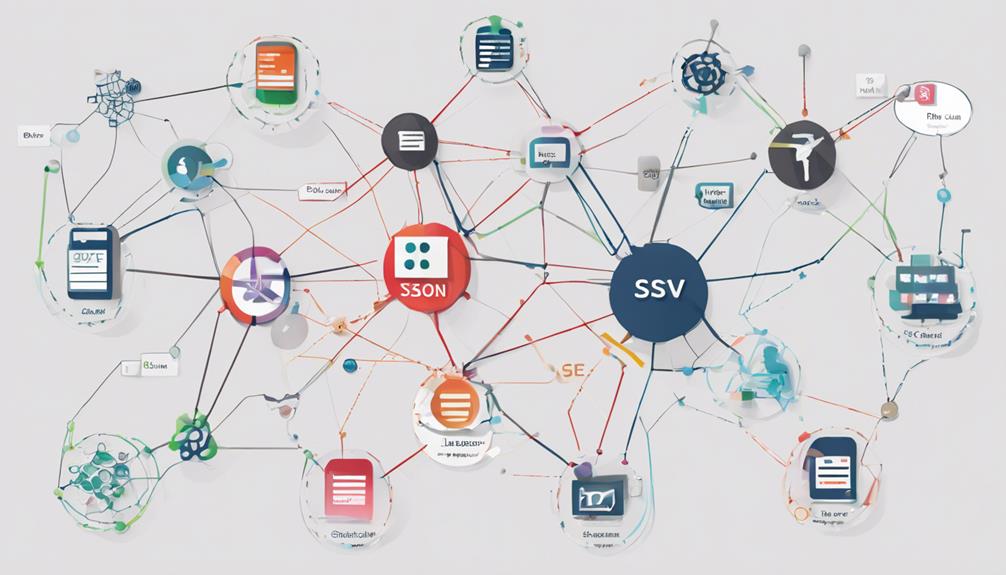When it comes to database data formatting, the impact on data quality is profound. By addressing duplicates, errors, formats, compliance, and actionable data, you’re essentially laying the groundwork for a strong database foundation. But how exactly do these formatting techniques work their magic in enhancing data quality? Let’s explore the intricacies behind each aspect and uncover how database data formatting improve data quality and the transformative power they hold in shaping the reliability and usability of your data.
Removes Duplicates
To improve data quality, removing duplicates is a crucial step in maintaining the integrity of a database. By eliminating redundancies, the database becomes more efficient and organized. Duplicates can arise from various sources, such as data entry errors, system glitches, or importing data from different sources. These duplicates not only consume storage space but also lead to confusion and inaccuracies in data analysis.
When duplicates are removed, the database’s overall accuracy is enhanced. Data integrity is preserved, ensuring that decisions made based on the database are reliable and trustworthy. Additionally, by streamlining the database and ensuring that each data point is unique, the risk of errors and inconsistencies is significantly reduced.
Implementing processes to identify and remove duplicates should be a routine part of database maintenance. Utilizing automated tools or establishing manual checks can help in efficiently identifying and eliminating these redundancies. By doing so, data quality is improved, and the database becomes a more robust and valuable asset for decision-making purposes.
Corrects Errors
Errors in a database can significantly impact the reliability and usability of the stored data. Correcting these errors through database data formatting is crucial for maintaining data quality. Here are some key benefits of error correction:
- Enhances accuracy: By fixing errors such as typos, missing information, or incorrect entries, data formatting ensures that the information stored in the database is accurate and reliable.
- Improves consistency: Consistent data formatting standards help in making sure that data is structured uniformly across the database. This consistency not only makes the data easier to understand but also enhances its overall quality and usability.
- Ensures data integrity: Correcting errors in the database ensures that the information is complete, valid, and up to date. This contributes to maintaining the overall integrity of the data, making it more trustworthy for decision-making processes.
Standardizes Formats
Standardizing formats within a database is a critical aspect of maintaining data quality and consistency. By enforcing a uniform structure for data entry, standardization increases efficiency and enhances accuracy. When all data is formatted consistently, it becomes easier to search, sort, and analyze information within the database. This uniformity reduces the chances of errors that can occur when dealing with different formats for the same type of data.
Standardized formats also facilitate smoother integration with other systems or databases. When data follows a set format, it can seamlessly flow between different platforms without the need for extensive reformatting or manual adjustments. This not only saves time but also reduces the likelihood of data corruption during transfers.
Moreover, standardized formats promote better data quality by ensuring that information is entered in a clear and structured manner. This clarity makes it simpler to identify and rectify any discrepancies or inconsistencies in the data, leading to improved overall data quality.
Ensures Compliance
Maintaining standardized formats within a database not only enhances efficiency and accuracy but also plays a crucial role in ensuring compliance with regulatory requirements and industry standards. By incorporating data validation techniques and adhering to regulatory requirements, your database formatting can significantly improve data quality and regulatory compliance. Here are three key ways database data formatting ensures compliance:
- Data Validation: Implementing data validation checks ensures that the information entered into the database meets specific criteria, reducing errors and maintaining data integrity.
- Regulatory Compliance: Formatting data in alignment with regulatory requirements ensures that your organization meets legal standards, avoiding penalties and reputational damage.
- Consistency: Standardized data formats enable easy tracking and auditing of information, facilitating compliance with industry standards and regulations.
Makes Data Actionable
To make data actionable, ensuring that it is readily accessible and interpretable is essential. Data enrichment plays a crucial role in enhancing the quality of raw data by adding valuable insights and context. By enriching your data through processes like standardization and deduplication, you can improve its quality and relevance, making it more actionable for decision-making. Additionally, data integration consolidates information from different sources into a unified view, enabling a comprehensive analysis of your data. This integration process ensures that data is consistent across all systems, making it easier to extract meaningful insights and make informed decisions.
Frequently Asked Questions
How Does Data Formatting Impact Data Storage Efficiency?
Data formatting plays a significant role in storage optimization. Efficiently formatted data enhances query performance by reducing resource utilization and improving space management. Properly structured data enables quicker retrieval and processing, making storage more efficient.
Can Database Data Formatting Help With Data Security?
Database data formatting can enhance data security by enabling efficient data encryption. Properly formatted data supports access control mechanisms, reducing vulnerabilities. Implementing standardized formatting practices will bolster the overall security of your database.
What Are the Common Challenges in Data Formatting?
When formatting data, you may encounter various challenges. Error handling is crucial for detecting and resolving issues, while consistency checks ensure uniformity. These processes help maintain data integrity and accuracy, enhancing overall data quality and reliability.
How Does Data Formatting Contribute to Better Decision-Making?
Data formatting enhances data accuracy and readability, aiding in better decision-making. When formatted correctly, data is easily interpretable through data visualization tools, facilitating efficient data analysis. This streamlined process empowers you to make informed decisions promptly.
Is Data Formatting a One-Time Process or Ongoing Maintenance?
Data formatting is not just a one-time fix. It’s vital for maintaining data consistency and accuracy. Regular maintenance ensures that your database stays reliable. Did you know that 40% of data loss is due to poor formatting practices?



